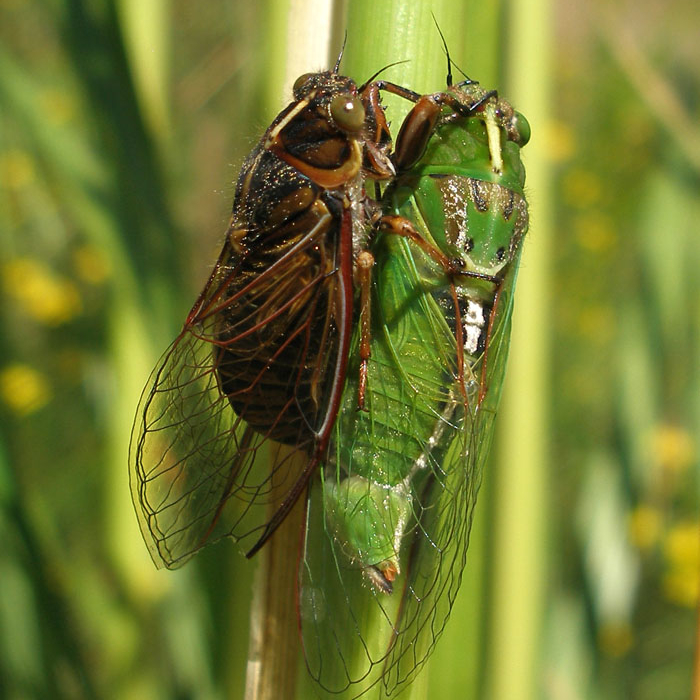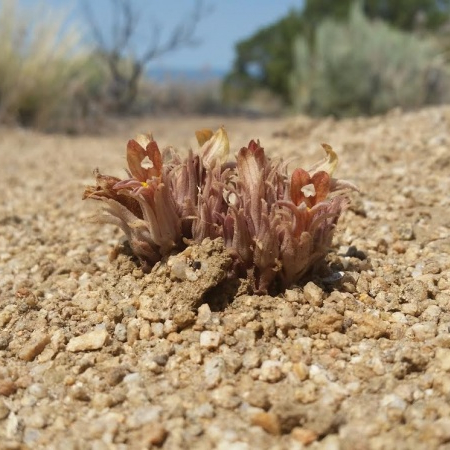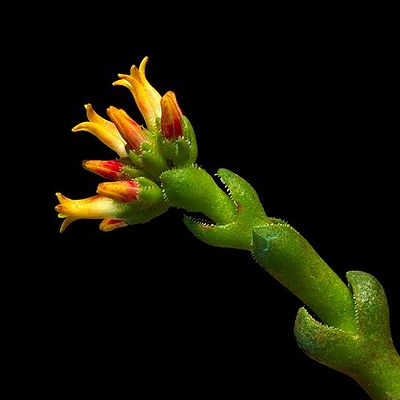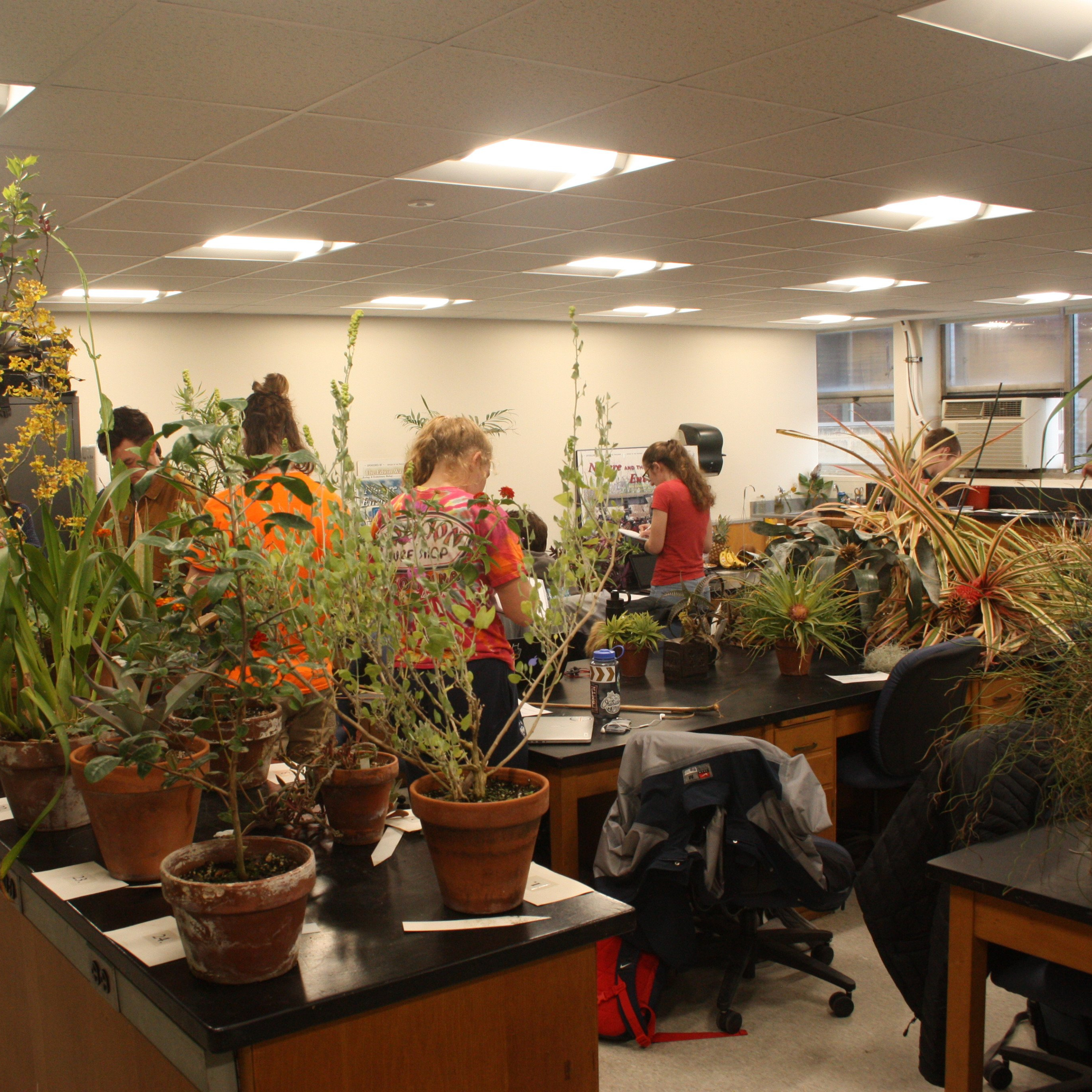What processes led to the diversity of life on Earth today? What can we learn about the history of life from the fossil record? How did plants move from an ancestral aquatic state to life on land? Why do humans have reptile jaws in our ears and fish gills in our throat? How did humans and other animals evolve? Why are flowering plants so diverse?
You can learn the answers to all of these questions (and more!) in classes offered in Ecology and Evolution that focus on evolutionary history, processes, and adaptations of plants and animals. If you have other questions or more in-depth questions about evolution, the EEB department also offers opportunities for students to conduct their own undergraduate research.

|

|

|
Courses focusing on evolution
For more information about a course, click on the title to expand the description. Many courses in EEB cover evolution as part of a broader curriculum (e.g. the evolution of flight is covered in EEB 4260: Ornithology), but are not listed here because evolution is not the main focus.
See also:
EEB 2202: Evolution & Human Diversity
Discover the biological bases of human diversity from genetic, evolutionary and cultural perspectives. We explore topics such as why some people can't drink milk, the genetic control and natural selection of human skin pigmentation, whether natural selection is still operating in humans, and why Genghis Khan may have 16 million descendants. We also address one of the greatest puzzles in social evolution: how did humans evolve our remarkable capacity to cooperate, first, in small foraging groups, and more recently in large-scale societies, such as modern nation-states?
Instructor(s): Schlichting and Turchin
Typically offered: Spring
Credits: 3
Format: Lecture
Grading: Two “midterms” 1/3 and 2/3 through the course and a final that combines Exam 3 (last third) with a comprehensive final. Two assignments: one on the genetic, and one on cultural half of the course. Points for participation at lectures via clickers.
EEB 2214: Biology of the Vertebrates
Explore the evolutionary history and diversity of vertebrates with an emphasis on classification, fossil history, feeding, locomotion, physiological ecology, reproduction, defense, and social behavior. We begin with a journey through the evolution of the fishes, traverse through the dinosaurs and their relatives, then turn our attention to the amphibians and reptiles. These are followed by an examination of the the evolution, structure, and behavior of the birds. We wrap up the semester with an indepth look at the mammals with a focus on their ecology as it relates to feeding, reproduction and social behavior.
Instructor(s): Davis and Herrick
Typically offered: Fall
Credits: 3
Format: Lecture
Grading: Grading is based on a midterm, an endterm and a final exam. Weekly activities in class as well as short self-assessments are also provided.
EEB 2245: Evolutionary Biology
Just a handful of evolutionary processes—natural selection, sexual selection, genetic drift, non-random mating, mutation and migration—have acted in concert to produce the fantastic diversity of life. The goal of this course is to introduce students to these evolutionary processes and use them to explain the history and distribution of life on earth. We study how these processes lead to geographic variation among populations and speciation. We examine the construction of evolutionary trees, the origin and extinction of species over geological time, including the origin of humans, and the origin of evolutionary novelties. We also explore the geographic distributions of organisms and explanations for those distributions.
Instructor(s): Jockusch, Simon, Yuan, Caira, Lewis
Typically offered: Fall Spring
Credits: 3
Format: lecture
Grading: Assessment format depends on instructors, but may include exams, weekly activities, and quizzes
EEB 3220: Evolution of Green Plants
Plants are the foundation of Earth's terrestrial landscapes and critical to human civilizations. In this course we explore the evolution of morphological, physiological, and genomic traits associated with the shift of plants onto land from aquatic ancestors, and the major innovations leading to the rise of flowering plants. We discuss how plants interact with animals and fungi and how they influence global biogeochemistry. Laboratories explore the diversity of morphological and anatomical traits of living and extinct plants, apply phylogenetic methodology to morphological and molecular characters, and discuss the latest exciting research in plant evolution.
Instructor(s): Goffinet and Lewis
Typically offered: Spring alternate years, even
Credits: 4
Format: 3 h lecture, 3 h lab
Grading: Lecture: quizzes, homework, midterm, final; Lab: projects, write-ups, oral presentations, lab quizzes
EEB 3245: Evolutionary Medicine
What, if anything, do medical practitioners need to know about evolution to prevent, diagnose, or treat disease? Students will learn: 1) key concepts in evolutionary biology illustrated with biomedically relevant examples, 2) the evolutionary roots of many inherited genetic disorders, and how this informs diagnosis and treatment, 3) to critically evaluate evolutionary explanations for health and disease, 4) how evolution of parasites, pathogens, and disease vectors leads to emergence of new diseases, or failure of treatment strategies, 5) how cancer is fundamentally an evolutionary process within a patient’s body, and 6) how evolution can be used as a tool to facilitate drug discovery, vaccine design, and treatment plans.
Instructor: Bolnick (Storrs)
Typically offered: Fall
Credits: 3
Format: Lecture
Grading: 6 online quizzes, 3 exams, participation, and a written research project.

EEB 3271: Systematic Botany
Instructor(s): Yuan
Typically offered: Spring alternate years, odd
Credits: 4
Format: NA
Grading: NA

EEB 3273: Comparative Vertebrate Anatomy
Inside your body are the physical remnants of distant ancestors—a fish gill in your throat, the jaws of a reptile in your ear, and the braincase of a shark in your skull (to name just a few). Other mysteries abound: the nerve that supplies the diaphragm below your ribs travels all the way from the neck; lower back pain afflicts 80% of adults. None of these things make sense except in light of evolution and the transformation of vertebrate form and function through time. This course teaches the fundamentals of anatomy while also tracing the evolution and diversity of vertebrate bodies, their adaptations, functions and biomechanics. In the lab you will experience anatomy directly through dissection, live animal demonstrations, and our extensive collection of bones and skulls.
Instructor(s): Schwenk
Typically offered: Fall alternate years, even
Credits: 4
Format: 3 h lecture, 3 h lab
Grading: Lecture exams; lab practicals and quizzes
EEB 4120: Paleobiology
In this course, we learn about the ancient Earth and the organisms that inhabited it. The lectures cover two general areas: 1) concepts and methods in paleobiology, and 2) the chronology of life’s history as documented in the fossil record. We discuss all types of organisms, although the focus is on animals, and to a lesser extent plants. In lab, students learn to identify and interpret major groups of fossils using (mostly) real fossil specimens.
Instructor(s): Bush
Typically offered: Spring alternate years, even
Credits: 4
Format: 3 credits of lecture, 1 credit of lab, 1 field trip (weather permitting)
Grading: Grading is based on 2 midterm exams, the final exam, and the lab assignments
Undergraduate Research
EEB faculty offer opportunities for undergraduate students to work on research during the summer or academic year. Students can participate in lab and field work on projects ranging from cicada systematics, to conifer genomics, to the maintenance of color morphs. Each year, the department hosts an undergraduate research symposium for EEB students, from which several students are selected to present at the Biology Undergraduate Research Symposium. To get involved in research in EEB, read through faculty profiles and websites and contact a faculty member whose research interests you.
Many faculty also mentor independent projects led by students, especially for students applying for funding to conduct research through the Office of Undergraduate Research (OUR). Examples of recent undergraduate research projects in the EEB department funded by OUR include:
- The Impact of Distance from a Stream on Color Morph Distributions of Plethodon cinereus, the Eastern Red-Backed Salamander
- Macro- and Microevolution of Salinity-Specific Ionocyte Morphologies in Euryhaline Fishes
- Transcriptomic Analysis of the Needle-Dropping Period for the Eastern Larch (L. laricina)
- Symbiont Replacement by Pathogenic Fungus in North American Dog-Day Cicadas
- Development of an Open-Source, Web-Based Database Module for the Tripal Framework to Improve Eukaryotic Genome Annotation
- The Genetic Architecture of Pollinator-Associated Floral Traits in Monkeyflowers
